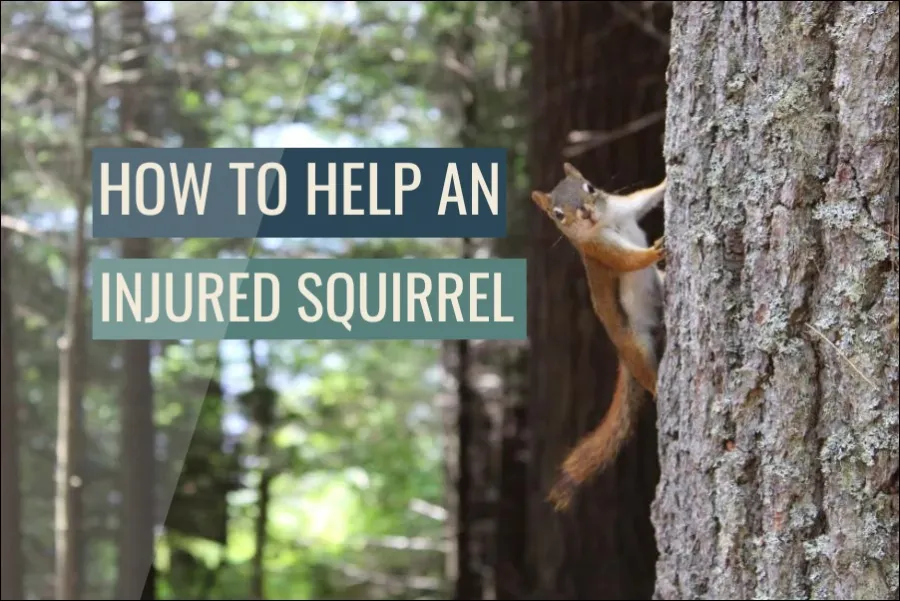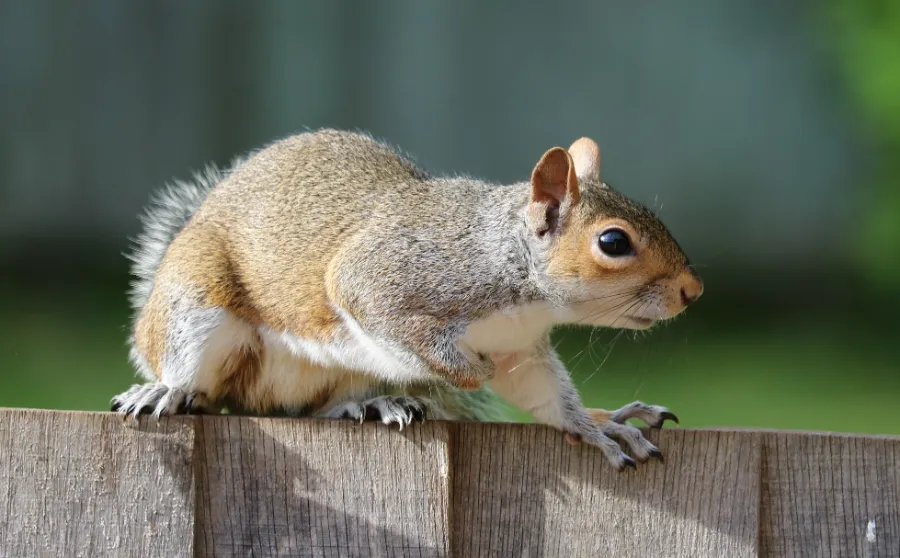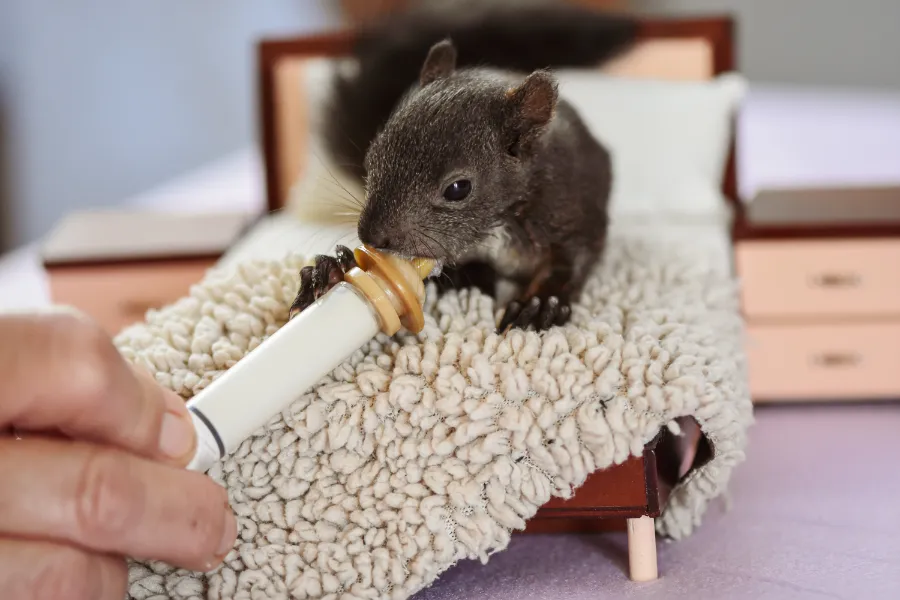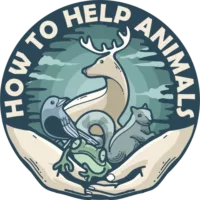
Finding an injured squirrel can be a distressing experience, but there are steps you can take to help the animal and ensure its well-being. Whether the squirrel has been hit by a car, attacked by a predator, or is suffering from a medical condition, it’s important to act quickly and seek appropriate help.
By providing the right care and support, you can give the squirrel the best chance of recovery and release back into the wild. Here are some guidelines on what to do if you find an injured squirrel.
Assessing the situation
Before taking any action, carefully examine the circumstances and select the best course of action. If the squirrel is in immediate danger, such as crossing a busy road or being attacked by a predator, it is critical to act immediately to save the animal. If the squirrel looks to be hurt but is not in imminent danger, you can examine it for a few minutes to establish the extent of its injuries. Approach the squirrel with caution and avoid handling it if possible, since wounded animals can be unpredictable and may bite or scratch if threatened.
Protecting the squirrel
If the squirrel is in immediate danger, it is critical to act swiftly to protect it. This may entail relocating the squirrel to a more secure area, such as away from a busy road or away from a predator. It is critical to handle the squirrel cautiously in order to avoid additional harm. If the squirrel is too huge or heavy to transport safely, you can try to protect it by covering it with a cardboard box or a blanket to give some protection and lessen stress. Keep a safe distance from the squirrel and avoid making abrupt movements or loud noises, which may alarm it.
Seeking medical attention
If the squirrel looks to be hurt or in distress, it is critical to get medical assistance as quickly as possible. Squirrels that have been injured may be in shock and require specialist treatment to recover. The appropriate course of action will be determined by the severity of your injuries and the resources at your disposal. If the squirrel is critically damaged or looks to be orphaned, it is critical to get help from a professional wildlife rehabilitator or your local animal control department. In the meanwhile, you may provide interim care for the squirrel by giving a cool, shady spot to relax and a small quantity of food and water if it is able to eat and drink.
Providing temporary care
If the squirrel is not terribly damaged and you can securely confine it, you can give it some interim treatment until it can be taken to a wildlife rehabilitation center. It is critical to handle the squirrel cautiously in order to avoid additional harm. You can provide interim care for the squirrel by providing a nice, shady area to relax and a small bit of food and water if it is able to eat and drink. It’s critical to keep an eye on the squirrel and get medical assistance as soon as possible if its health worsens.

Transporting the squirrel
Once you’ve given the squirrel some interim treatment and chosen the best course of action, transfer the animal as quickly as possible to a wildlife rehabilitation facility or a qualified wildlife rehabilitator. It is critical to handle the squirrel cautiously in order to avoid further harm during transfer. If you are unable to move the squirrel yourself, you can seek assistance from a professional wildlife rehabilitator or your local animal control organization.
Finding a wildlife rehabilitation center
There are various sites available to help you locate a wildlife rehabilitation center or a registered wildlife rehabilitator. You may look out veterinarians and animal hospitals online, or you can call your local animal control department or a wildlife conservation group for help. It is critical to select a reputable and knowledgeable facility that is equipped to handle the unique requirements of squirrels and other animals.
Providing follow-up care
Once the squirrel has been transferred to a wildlife rehabilitation center, it is critical that it get the required follow-up treatment to guarantee its recovery and release back into the wild. Depending on the type and severity of the injuries, this may entail medicines, specific diets, and physical therapy. It is critical to follow the wildlife rehabilitator’s suggestions and to provide the squirrel with the essential assistance and care to ensure its recovery.
Releasing the squirrel
When the squirrel has healed from its injuries and is declared appropriate for release, it must be returned to the wild in a suitable place. It is critical to select a safe place that offers the squirrel with the resources it requires to live, such as food, water, and shelter. It is also critical to avoid releasing the squirrel in an area where it might be injured or in conflict with humans or other animals.

Preventing future injuries
One of the most efficient methods to assist wounded squirrels is to avoid future injuries. This may entail adopting precautions to limit the danger of car crashes, such as slowing down while driving through squirrel-infested regions or avoiding driving at dawn or twilight, when squirrels are most active. It may also include safeguarding squirrels against predators, humanely reducing rodent populations, and avoiding the use of pesticides and other hazardous chemicals. You may help lessen the likelihood of future injuries and guarantee the safety of squirrels and other animals by following these steps.
Educating others
Another crucial aspect of assisting wounded squirrels and preventing future injuries is educating others on how to assist these creatures. You can discuss what to do if you come across an injured squirrel, how to offer temporary treatment, and how to locate a wildlife rehabilitation center. You may also offer advice about ways to avoid injuries, such as driving carefully and avoiding the use of pesticides and other potentially toxic substances. You can help create a more informed and compassionate community that is better able to aid wounded squirrels and other animals by sharing this information with others.
In conclusion
If you come across an injured squirrel, you must act swiftly and get proper care. You can assess the situation, protect the squirrel, seek medical help, offer interim care, move the squirrel to a wildlife rehabilitation center, and provide any necessary follow-up care. You may also help prevent future injuries by reducing the danger of automobile crashes, safeguarding squirrels from predators, humanely regulating rodent populations, and avoiding the use of pesticides and other toxic chemicals. By completing these steps, you may assist wounded squirrels in recovering and returning to the wild, as well as contribute to a more caring and knowledgeable community.
